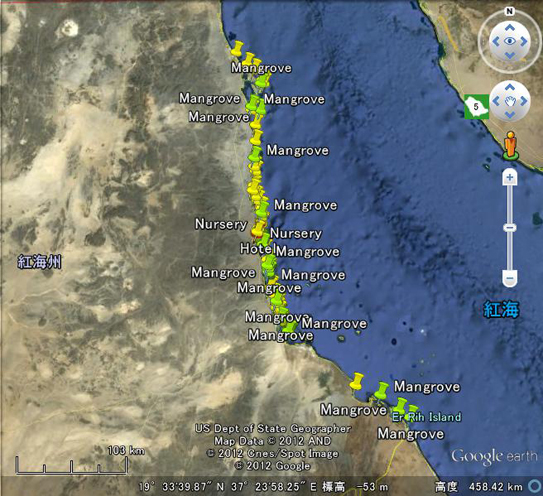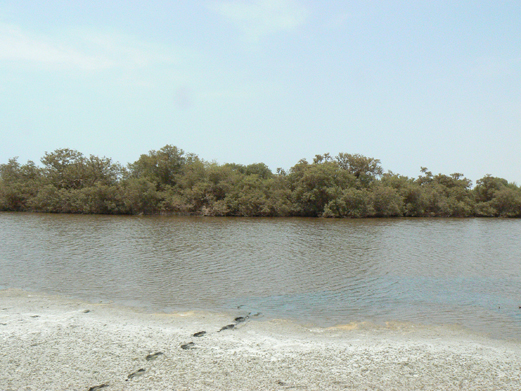- Cultivation test of mangrove toward reforestation in Red Sea Coast of Sudan
(2012/7/4-2012/7/18、Sudan)
Representative, Action for Mangrove Reforestation (Actmang) ・Seiji SUDA
Introduction
Mangrove plantation team organized by Actmang and Red Sea University carried out the following activities to develop plantation method in Sudan using a native mangrove species, Avicennia marina. We have succeeded in making pot seedlings in the intertidal zone for the first time. Transplanting test, which is the next step, has been started.
Native forest in Sudan is very unique. There was mangrove stands in an isolated pond from the open sea. The pond appeared under the condition of low sea level during the summer. Its salinity was over 10 %. The salinity of ground water would be not so high.
(1) Developing nursery technique
As mentioned above, we have succeeded in making pot seedlings at an intertidal pool in the campus of Faculty of Marine Science & Fisheries. There is no influence of the wave on the pool. On the other hand, we failed it in another site, due to drying of tidal flats during the summer. Its environment was changed from the open sea to pond in the summer.
The next nursery test will be set by Sudanese members at tidal flats near the port during the next fruiting season. It would be from autumn to spring.
(2) Developing transplanting technique
From July 2012, we started tests of transplanting for finding suitable ground level at two sites (near the port, and near native forest). Seedlings were planted on tidal flats from the sea side to the land side. Two kinds of seedlings were used. One is pot seedlings. The other is wild seedlings from native forest.
Two more transplanting tests will be carried out by Sudanese members in different sea levels from autumn to winter. We expect to obtain the results through monthly monitoring within the next year.
(3) Selecting of mangrove plantation sites
We selected potential sites for mangrove plantation along the coast of Sudan by analysis of satellite images from Google Earth. The next step would be ground survey about soil thickness and topography. After the survey, experimental cultivation is needed.

|

|

|

|